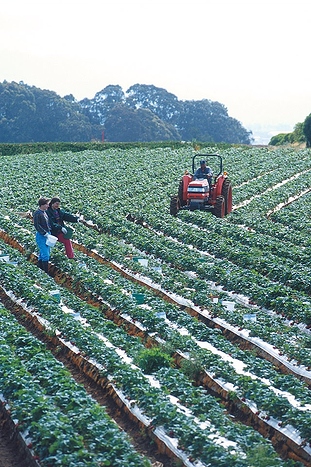The April 2020 Coronavirus Federal Bailout of U.S. Animal Agriculture
On April 17, 2020, The United States Secretary of Agriculture Sonny Perdue announced a $19 billion bailout for ranchers and farmers. The significant influence of animal agriculture’s lobbying presence in Washington D.C. is well-known. Thus, it’s no surprise Congress made prominent decisions regarding general allocation of funds. After which the United States Department of Agriculture is conducting distribution and management. President Trump made an identical announcement as Perdue and both public figures agreed: $19 billion would not suffice for the entire year. They said more funding would be necessary, but would not be made available until July 2020.
The Coronavirus epidemic has caused supply chain issues because the restaurant industry’s demand for products has significantly reduced. Therefore, processors of milk and animal products refused to take shipments. This has caused surplus and profit loss for animal agriculture.
The entire agricultural aid program is called the Coronavirus Food Assistance Program. The funding is sourced from the CARES Act, the Families First Coronavirus Response Act, and the USDA’s Commodity Credit Corporation.
The USDA is the main driving force behind the propping up of animal agriculture (in addition to federal lobbying and farming organizations). An extensive list of USDA Actions Responding to COVID-19 is available on their website.
The $19 billion bailout is funneled into two programs: $16 billion will be paid directly to farmers who experienced a bare minimum of financial loss (relative to financial statements in recent months), and the remaining $3 billion will be used to purchase agricultural products labeled as “pork,” “beef,” chicken, “dairy,” and produce. These federal purchases will be distributed among food banks and other non-profit organizations to be utilized in the Coronavirus relief effort. The USDA will start off the program by making the following monthly purchases: $100 million in fresh produce, $100 million in “dairy” products, and $100 million in animal products. Evidently, animal agriculture receives two-thirds from this disbursement plan.
Ranchers and animal agriculture farmers are predisposed to benefit more than crop farmers who produce products for human consumption due to the structural and economic design of the agricultural system. The overproduction of “livestock” feed (grains such as soy and corn) versus plant-based crops for human consumption is a widely recognized structural imbalance.
The USDA categorizes grains such as soy and corn as “row crops.” Although consumers frequently purchase products manufactured from “row crops” such as corn and soy, the largest client of soy and corn is the livestock farming industry. In a press release, Senator John Hoeven, R-N.D. explained the USDA’s funding allocation plan: “…$9.6 billion for the livestock industry [includes “dairy”], $3.9 billion for row crop producers; $2.1 billion for specialty crops producers; and $500 million for other crops.” The livestock industry and “row crops” receive the bulk of financial relief at $13.5 billion. “Specialty crops” and “other crops” - generally produced for human consumption - receive significantly less: $2.6 billion. Again, the scale tips in favor of animal agriculture.

